On Generation of Standardized Load-time Histories and Standardized Load Spectra
LI Shan-shan,CUI Wei-cheng
(1 State Key Lab of Ocean Engineering,Shanghai Jiao Tong University,Shanghai 200030,China;2 China Ship Scientific Research Center,Wuxi 214082,China)
1 Introduction
Recently,a Unified Fatigue Life Prediction(UFLP)method for marine structures has been proposed by the authors’group[1].In the application of the UFLP method,it is necessary to input a load-time history.For a structure to be designed using UFLP,some sort of standardized load-time history(SLH)must be provided.
In most references,the acronym SLH is generally used for‘standardized load-time histories’ as well as for ‘standardized load sequences’,including ‘load spectra’.More specifically,it is distinguished between ‘load-time history’ for processes with actual time information and ‘load sequence’ as a succession of loading events without explicit time information[2].However,in this paper,we distinguish the ‘standardized load-time histories’ with ‘standardized load spectra’.Standardized load-time history is for time domain description,and the latter one is defined as a spectrum that does not cover the total expected in-service spectrum,but only a representative fraction(return period)in frequency domain.This spectrum is thought to be repeated in a test or a numerical simulation until final failure or the anticipated usage would be safely covered.It may be interesting for an assessment of the necessary effort in terms of testing time and cost,but it is also relevant with regard to a realistic overall spectrum shape where the(calculated)fatigue damage is properly distributed over large,medium and small cycles.
Due to many kinds of advantages,standardized load-time histories have been developed and applied to fatigue studies for many years.The first SLH proposed and extensively applied was Gaßner’s 8 level blocked programme test which can be dated back to 1930s[2].However,the significant progress was made in 1970s.With the need for optimum light-weight design,originally the aircraft industry was the main driver for these efforts.Two of the most well known SLH’s are the TWIST and FALSTAFF sequences for transport and fighter aircraft,respectively,which have been and are still being applied for numerous studies on materials,joints and other structural elements.HELIX/FELIX and the two TURBISTAN sequences are further examples from the aerospace field.Because of the relatively high number of cycles of the TWIST and HELIX/FELIX sequences,shortened versions of these SLH’s have been also devised as has been done later with the WISPER and other sequences.
Starting in the mid 1980s,SLH’s for non-aerospace applications have been developed covering areas such as wind turbines,offshore platforms or steel mill drives.In the US,activities were mainly centered on the derivation of test load sequences to be used for evaluation and development of fatigue life prediction methodology[2].Bodies like the SAE Fatigue and E-valuation Committee took a pragmatic approach by selecting test load sequences from existing strain measurements,which were felt to be typical for the ground vehicle industry.The early quite short sequences published in 1977,were followed later by biaxial sequences that again were based on a set of measurements made available from different sources,but were more realistic with regard to spectrum length and distribution of small and large cycles.Similarly in the US aircraft community a variety of load sequences have been generated and distributed without the formal framework of European SLH’s,for example sequences typical for fighters(F-16)or transports(C-5)with different mission-dependent load cycle distributions.These load sequences are frequently used for validation of numerical fatigue life prediction concepts and software packages.
The purpose of this paper is to discuss various issues related to the generation of standardized load-time histories and standardized load spectra.It starts from an overview on SLH available at present,then it details the procedure on generation of the standardized load spectra and load-time history.An example calculation is given to show the process in the end.
2 Basis of generation of standardized load-time histories and load spectra
The basis of the generation of standardized load-time histories is given in Ref.[3].These include Load measurements,Usage statistics,General definitions and Non-technical items[3].They are briefly described as follows.
(1)Load measurements
Measurements from several similar structures should be available,because otherwise it would be impossible to identify the characteristic features of the spectrum,the sequence and mixture of events and load variations.For the existing SLHs,the respective data bases that have been collected and carefully assessed by the groups of experts were considered sufficient with respect to their statistical significance.
(2)Usage statistics
At best the measurements available cover all relevant modes of operation and environmental conditions,but very probably not in the correct percentage.Therefore,additional information has to be collected and introduced with regard to usage statistics such as the anticipated distribution of weather statistics(seastates,max wave heights)for certain geographical locations for offshore applications,etc.
(3)General definitions
A number of spectrum parameters have to be defined such as the extreme values of loads which may have to be extrapolated from the data pool or determined by physical limits.Similarly the block size or return period of the SLH has to be agreed which must not be too short in order to avoid unrealistically truncated spectrum shapes(close to a constant amplitude test).With respect to applicability considerations,it is often necessary(and possible)to omit small‘non-damaging’ (at least in a relative sense)load variations.‘Rules of thumb’ have evolved that give some guidance for the selection of omission levels[4].The aspect of a realistic distribution of damage over the load ranges such as the block size(number of cycles per block)and equivalent usage present in the spectrum should be adequately taken into account.
(4)Non-technical items
Experience shows that the development of a SLH should be a cooperative effort of several contributors in order to consider the various aspects and requirements effectively.The principles followed and the range of application should be clearly documented and published.
3 Generation of standardized load-time histories and load spectra
Offshore structural loading environment can be described as sequences of different,modes which may be sea states of the given severity.These modes of operation contain load cycles of difference,but typical magnitudes and frequencies.Often distinct patterns of grouped load cycles can be distinguished,called a loading event or element,such as different sail phases of a ship.The occurrence of modes and loading events has to be defined in terms of frequency,severity and mixture/sequence,which in summary establish the so called operating profile.
As a basic input to a SLH generation,statistically adequate samples of load measurements under operational conditions have to be available for every loading event.By means of data evaluation and processing the measured loading samples are prepared for compilation accord-ing to the operating profile.Thus,the overall load spectra will be defined,but for definition of the final load sequences and/or load time histories.The general approach for generation of SLH’s is shown in Fig.1.Further steps have to be taken that are addressed later in this Section.

Fig.1 General(simplified)approach for the generation of SLH’s(example:passenger vehicle)[2]
3.1 Operating profiles
The operating profile describes the service conditions for the total or a representative fraction of the operating period.The approaches for determination of operating profiles depend on the type of structural application concerned.The use of airplanes,helicopters,offshore structures,wind energy plants,etc.can,as a rule,be predicted and verified quite well.Operating profiles can therefore be based on reliable data,e.g.mission profiles(aircraft),meteorological long-time wind(wind energy plants)or sea state observations(offshore platforms),e.g.Ref.[5].
3.2 Analysis of operational loads
Statistically adequate samples of operational loads have to be available for every load case.These samples are usually acquired by in-service measurements,but they may also be supported by calculations or simple assumptions.Data processing aims at the preparation of the measured samples to be used as a basis for the generation of test load sequences compiled according to the operating profile,comp.Fig.1.Tab.4 of Ref.[2]summaries the procedures that may be applied for analysis purposes.
The two-parametric rainflow counting has the greatest significance for time domain fatigue analyses today.The result is the rainflow matrix(with residuum)that contains the number,amplitudes and mean values of load cycles that can be traced back to closed stressstrain hysteresis loops of a representative material element.These load cycles are considered to be the basic damaging elements of a load sequence.
3.3 Determination of load spectra by extrapolation
The load cycle distributions derived from sample measurements have to be extrapolated according to the requirements of the operating profile.The simplest way is the plain repetition(factor for the cumulative frequency of every loading element)without extrapolation of the maximum load levels.This may be sufficient when the maximum loads are well defined and already covered by the measured loading elements available(e.g.vehicle applications with extreme values measurements in proving grounds),see Fig.2.
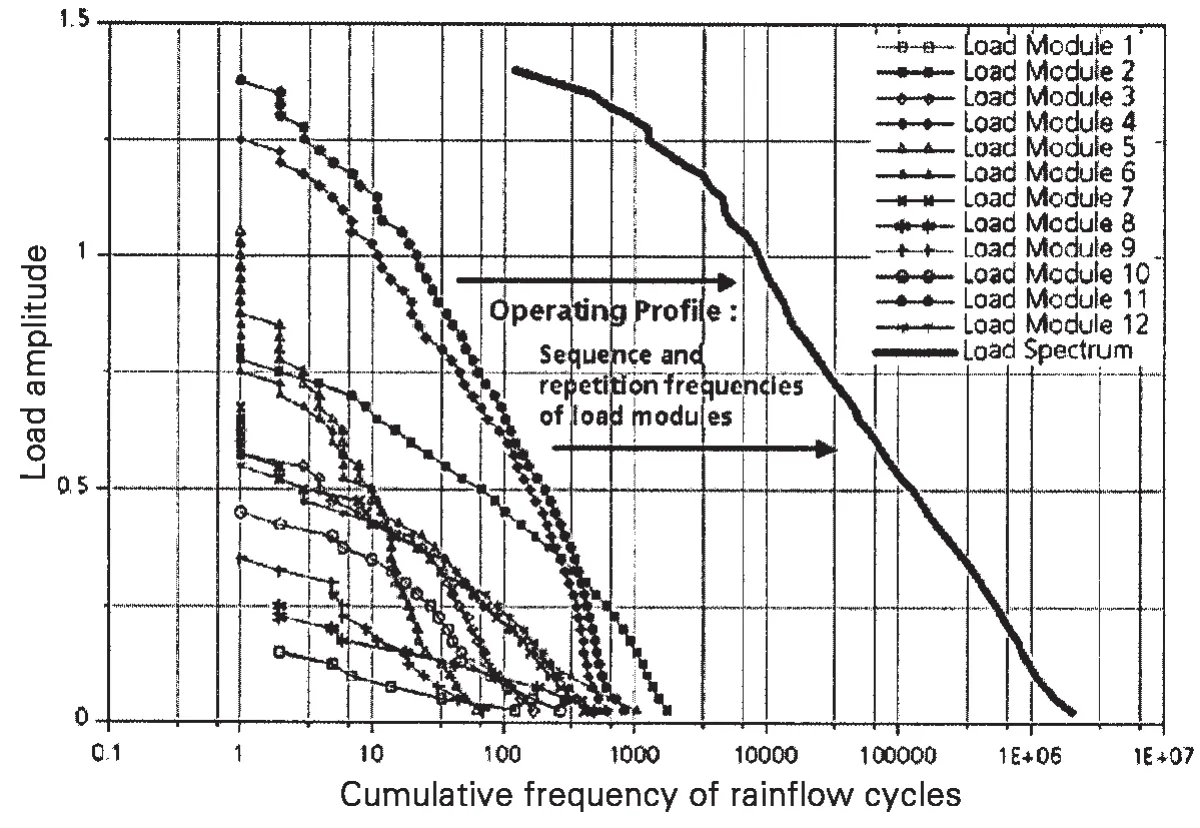
Fig.2 Compilation of a load spectrum by simple repetition of loading segments according to the associated operating profile[2]
If only segments of a random load sequence are available,generally extrapolation up to physical limits will be necessary.A simple,but well-suited approach for continuous loading environments would rely on extrapolation based on an approximation of the respective sample load spectra by exponential distributions,Eq.(2)[6].However,for loading environments with discontinuous single loading events,the distribution of extreme values originating from consistent physical causes has to be considered.In principle,the methods mentioned are applicable for uniaxial loading and one-parametric distributions.However,in the framework of the so called simultaneous procedure[7],where basic elements are not load cycles,but short(multiaxial)load segments,they can be applied for the extrapolation of multiaxial processes including two parametric distributions(rainflow,joint density distributions),too.
3.4 Generation of load time-histories for fatigue tests
For the synthesis of test load sequences and load time histories,approaches compiled in Tab.5 of Ref.[2]will be applied with similar categories as for the analysis phase.
(1)Use of measured load segments(time histories or sequences)
With respect to the various loading and test conditions,synthesis of test load sequences by combination and repetition of measured loading segments is always possible.The main advantage of this approach is that all characteristics of the loading conditions are maintained with respect to the correct order,frequency contents,correlation functions or phase relations of load cycles.However,the resulting test sequence and time would be unacceptably long without further processing.Therefore,this approach has to be combined with time reduction meth-ods which again depend on the loading and test conditions.
For uniaxial loading with stiff components(without environmental impact),the most effective time reduction is achieved by reduction of the load time histories to turning points and omission of small load cycles[4]. ‘Allowable’filter levels for omission have to be defined with care,but the reader should refer to the literature with regard to this topic[4,8].The additional inclusion of environmental exposure(e.g.temperature)may partly counterbalance the time reduction effect(comp.FALSTAFF and ENSTAFF).
The omission of low-intensity load segments(instead of single load cycles)is a less effective method that,nevertheless,has to be applied when real-time load histories need to be utilized,e.g.in case of dynamic response,connected with multiaxial loading.
For stiff components(negligible dynamic response),however,a reduction of testing time for multiaxial and/or rotating loading is also possible via the much more effective omission of individual load cycles if it is combined with an adaptation of the load-time history characteristics to the limits of the test facility.
(2)Generation of load sequences by random drawing
In most standardization applications,however,the more general(pseudo-)random generation procedures are preferred based on one or a set of load spectra that encompass the desired loading environment.For the generation of a random sequence of load cases(realization of the operating profile,Fig.1),the Markov reconstruction is well suitable,because it takes successive events into account.For synthesis of uniaxial random load sequences on a cycleby-cycle basis,random drawing of load cycles from cumulative frequency distributions[9-10],Markov-reconstruction for stationary processes[11]up to the sophisticated rainflow reconstruction[12]have been used.
The Fourier procedures(like power spectral density)are particularly relevant for applications under dynamic test conditions.In this paper,it has to be emphasized that power spectra and other results of Fourier analyses are not directly fatigue-relevant,because load cycles are not clearly defined.For stationary Gaussian processes,however,a well-defined relation exists between power spectral densities and cumulative frequency distributions[6,13-14].This means that the Fourier tools can be applied for stationary Gaussian processes even if they are only a fraction of more complex load-time histories.
4 A practical example of generation of standardized load-time history and load spectra
In order to determine the design load for a specific ship or an offshore structure,we first need to provide the time fraction for each sea state,(Si,pi),where i is the sea state number from 0 to 12,0 can be used as the port time,Siis the ith sea state number and piis the time fraction of the ith sea state.Now if we know a short time period of sea state k,we can convert this measurement to different sea state assuming all the responses are in linear range.Then for each sea state,we extrapolate to the corresponding fraction of the design life.The next step,we should discuss in two aspects.In time domain analysis,we can compose a whole load history with all different sea state time fractions,then we can also study the load sequence effect for the structure’s fatigue behavior;and in frequency domain analysis,we can count and summarize all the cycles for different sea states,and derive the load spectra.This load spectrum will be independent of the short time measurements.If the time fraction for each sea state,(Si,pi)has been specified,no matter what sea state is used for the short time measurement,the same design load spectrum will be derived.The procedure of obtain the standardized loadtime history and load spectrum is shown in Fig.3.
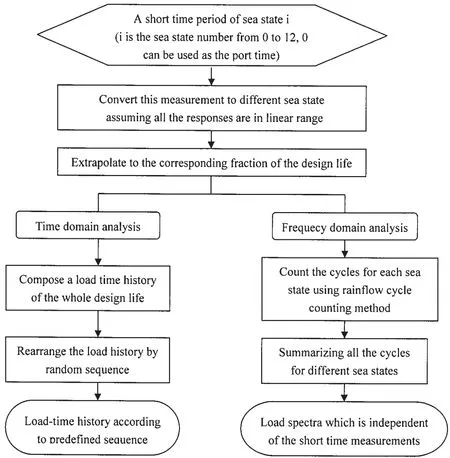
Fig.3 Procedure of derivation of standardized load-time history and load spectra
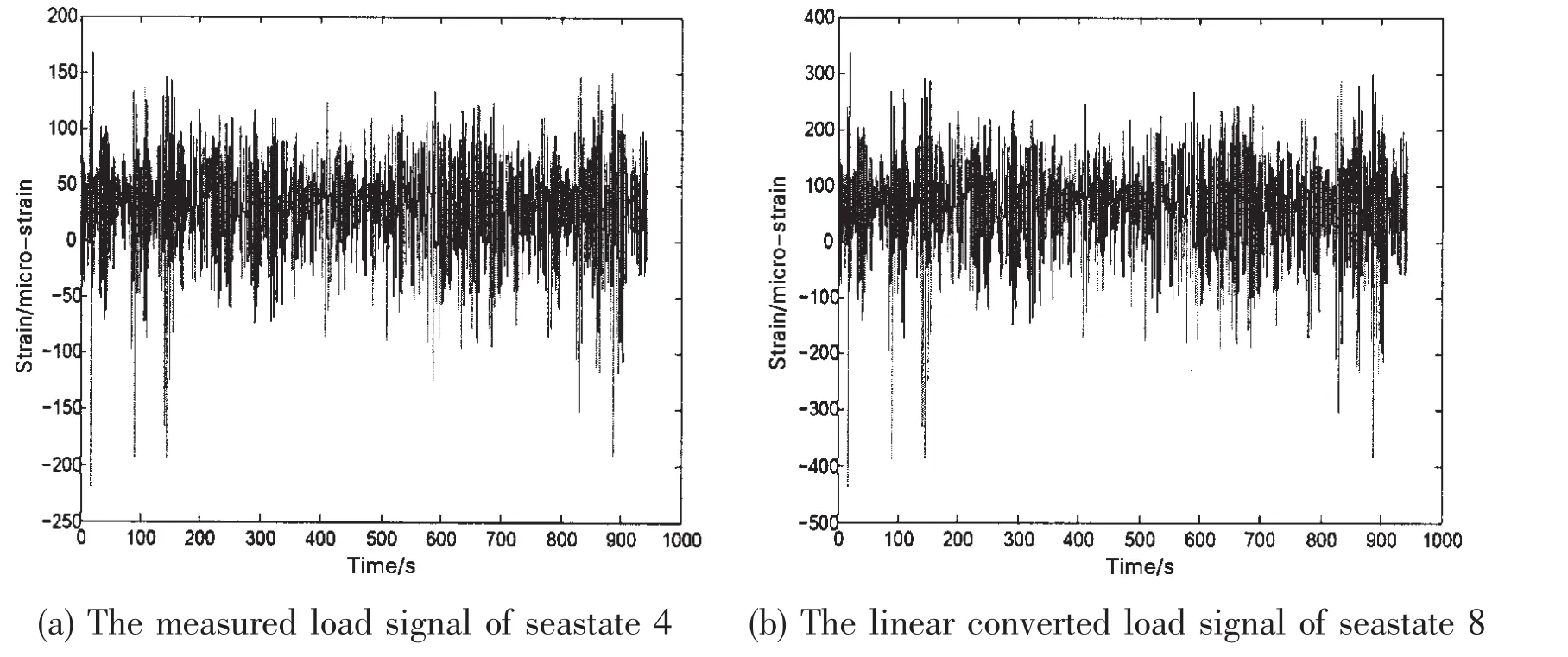
Fig.4 Load signals of seastate 4 and seastate 8
The definition of the seastates differs between some sources.Therefore,it is necessary to reconcile this information by means of the socalled ‘significant wave height’ H1/3,that is the average of the one third highest waves[4].The load time histories of different seastates here are obtained by linear conversion of the measurement,as shown in Fig.4.
During an offshore structure’s service life of about 25 years,one year seems to be a logical return period,because offshore structures in long run experience similar weather every year.Here we suppose time scale of each seastate is shown in Tab.1.
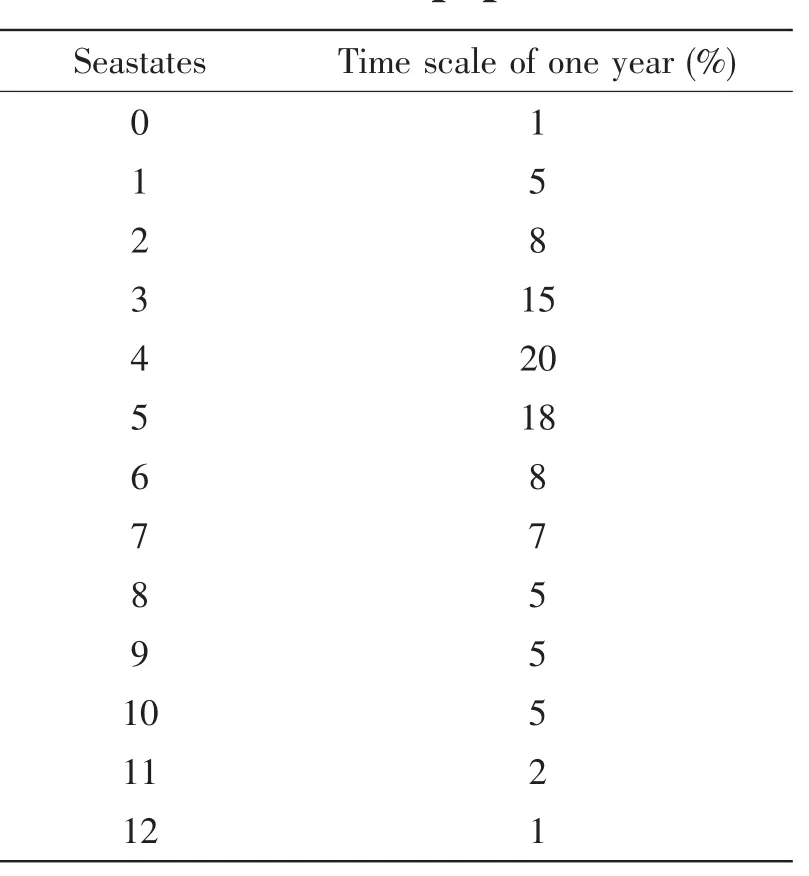
Tab.1 Time scale of each seastate used in this paper
4.1 Generation of standardized load time-histories
According to data in Tab.1,we can use load extrapolation method introduced in Ref.[15]to obtain a complete one-year load-time history,and range all the load histories of different sea states in different orders,see Fig.5 and Fig.6.The load sequence effect will be studied in the future.
4.2 Generation of standardized load spectra

Fig.5 Load-time history arranged in a lower to higher order
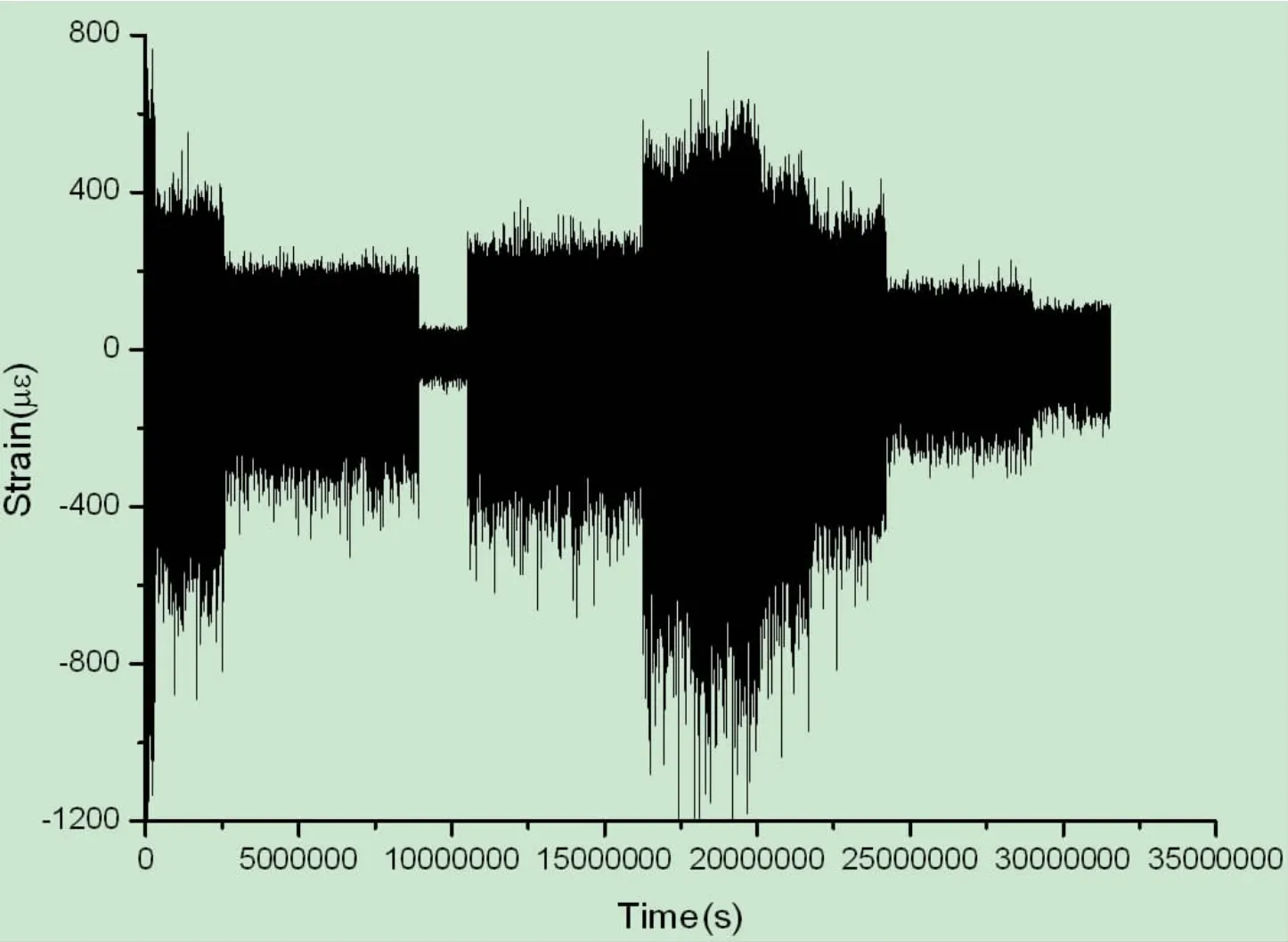
Fig.6 Load-time history arranged in a random order
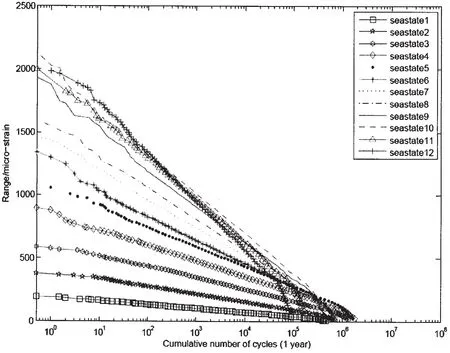
Fig.7 Load spectra of seastates 1~12(Ranges of all cycles)
The corresponding time fraction of one year extrapolated load spectra of different 12 seastates is shown in Fig.7,which is obtained by load extrapolation method[5]and counted by rainflow cycle counting method[15].
The standard load spectrum finally has been generated by linking the generated strain histories for each seastate according to the time scale of seastates.Standardized load spectrum for a duration of one year is obtained at last,see Fig.8.
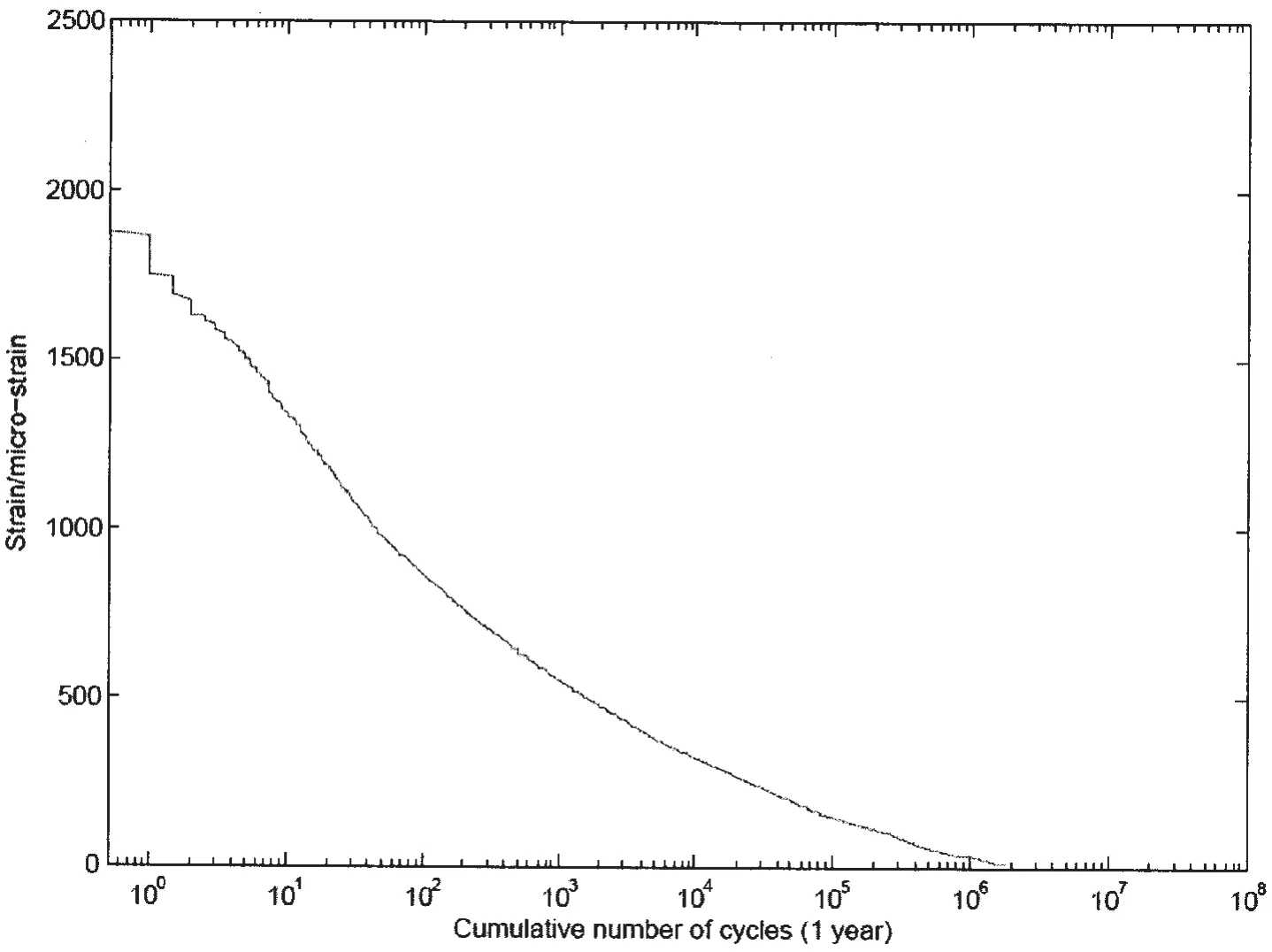
Fig.8 Standardized load spectra for a duration of 1 year
5 Summary
In practical application,it is not satisfactory that using different design loads to assess the fatigue life of a structure at every time.Therefore,how to construct the standardized design load from limited practical measurements is a very important issue in fatigue life prediction.In this paper,a method to establish the standardized load-time history and load spectra from short time fractions for a specific structure has been introduced.An example calculation is given to illustrate the process.
[1]Cui W C,Wang F,Huang X P.A Unified Fatigue Life Prediction(UFLP)method for marine structures[J].Marine Structures,2011,24(2):153-181.
[2]Heuler P,Klätschke H.Generation and use of standardised load spectra and load-time history[J].International Journal of Fatigue,2005,27(8):974-990.
[3]Berger C,Eulitz K G,Heuler P,Kotte K L,Naundorf H,Schuetz W,Sonsino C M,Wimmer A,Zenner H.Betriebsfestigkeit in Germany-an overview[J].International Journal of Fatigue,2002,24:603-625.
[4]Heuler P,Seeger T.Criterion for omission of variable amplitude loading histories[J].Int J Fatigue,1986,8(4):225-230.
[5]Schütz W,Klätschke H,Hück M,Sonsino C M.Standardized load sequence for offshore structures-WASH I[J].Fatigue Fract Eng Mater Struct,1990,13(1):15-29.
[6]Buxbaum O,Betriebsfestigkeit sichere,wirtschaftliche Bemessung schwingbruchgefährdeter Bauteile.Durability,safe and economic design of fatigue-loaded components[M].Verlag Stahleisen mbH,Düsseldorf,2.Auflage,1992.
[7]Nieslony A.Determination of fragments of multiaxial service loading strongly influencing the fatigue of machine components[J].Mechanical Systems and Signal Processing,2009,23(8):2712-2721.
[8]Conle F A.An examination of variable amplitude histories in fatigue[D].PhD thesis.University of Waterloo,Canada,1979.
[9]Schütz D,Lowak H,de Jonge J B,Schijve J.A standardised load sequence for flight simulation tests on transport aircraft wing structures[R].LBF-Report FB-106,NLR-Report TR 73,1973.
[10]Aicher W,Branger J,van Dijk G M,Ertelt J,Hück M,de Jonge J B,et al.Description of a fighter aircraft loading standard for fatigue evaluation FALSTAFF[R].Common report of FCW Emmen,LBF,NLR,IABG,1976.
[11]Haibach E,Fischer R,Schütz W,Hück M.A standard random load sequence of Gaussian type recommended for general application in fatigue testing;its mathematical background and digital generation[M].In:Bathgate RG,editor.Fatigue testing and design.London:The Society of Environmental Engineers,1976:29.1-29.21.
[12]Schütz D,Klätschke H,Steinhilber H,Heuler P,Schütz W.Standardized load sequences for car wheel suspension components,car loading standard-CARLOS[R].Fraunhofer-Institut für Betriebsfestigkeit(LBF),Darmstadt,Industrieanlagen-Betriebsgesellschaft mbH(IABG),Ottobrunn,LBF-Report No.FB-191,1999.
[13]Bendat J S,Piersol A G.Random data analysis and measurement procedures[M].New York:Wiley,1971.
[14]Papoulis A.Probability-random variables and stochastic processes[M].New York:McGraw-Hill,1965.
[15]Li Shanshan,Wang Zhibo,Cui Weicheng.On implementing a practical algorithm to generate fatigue loading history or spectrum from short time measurement[J].Journal of Ship Mechanics,2011,15(3):286-300.
- 船舶力学的其它文章
- Study of the Prediction of the Engine’s Underwater Exhaust Noise
- Coupled Vibration of Fluid-filled Functionally Graded Material Cylindrical Shell
- Nonlinear Model for Vibration Analysis of Fluid-conveying Pipes via the Incremental Harmonic Balance Method
- Study of Damage Characteristics during Fatigue by Acoustic Emission Techniques
- Comparative Analysis of Vortex Induced Nonlinear Vibration of Casing Pipe under Three Different Boundary Conditions
- Experimental Investigation of Sloshing Loads and Structural Dynamic Responses in Tanks of LNG Carriers

